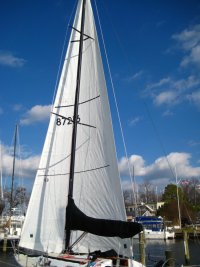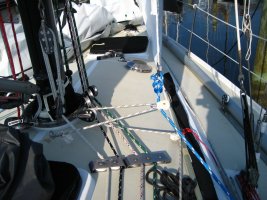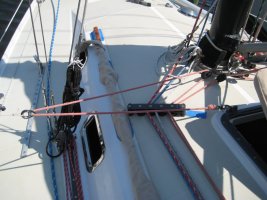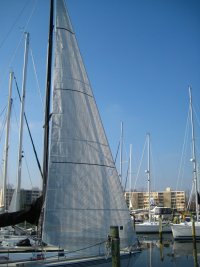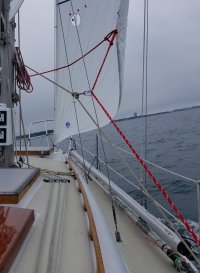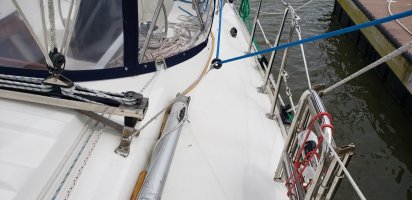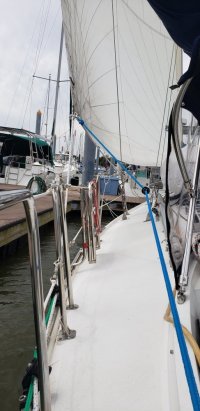Howdy Tex,
You didn't specify your current jib size which does impact the sheeting angle as detailed in the links Loren provided.
Generally speaking, you would use a sheet block on the inboard track to get the best sheeting angle upwind on our Ericsons. A #3 jib (95 - 105%) where the leech is forward of the spreaders, could use a track on the cabin even further inboard and sheets run inboard of the shrouds. Or you could use inhaulers to pull the clue inboard. A 120 - 155% would use the inboard (cabin perimeter) track. The genoa leech hitting the spreader tip limits the degree you can sheet in. A 155% has the max draft at the spreaders so the sheeting angle is actually better than the 120 - 140% genoas which can't be pulled in as far before the leech hits the spreader tip.
For reaching angles, the more you release the sheet from the inboard location to adjust for the wind angle, the less you are pulling DOWN on the jib leech causing the jib to twist at the head and spill wind and lose power. Therefore, you move the sheeting block outboard to the rail track and forward to maximize the pull DOWN to reduce twist. You can use the lazy sheet to take the load at the rail on a single tack (both sheets on same side temporarily) or swap sheets with the new lazy sheet running to the other rail if you are going to reach on the other tack or to inboard if you are sailing closer to the wind on the other tack.
Mark

